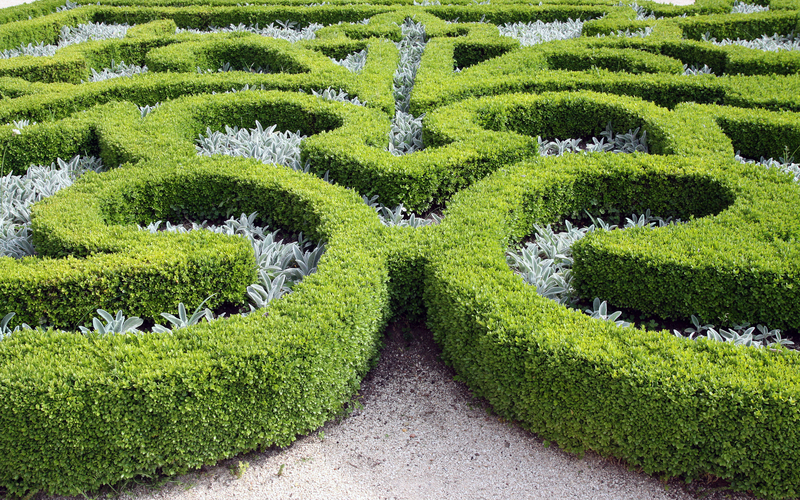Reimagining a Forgotten Garden: Where to Begin
Posted on 22/08/2025
Reimagining a Forgotten Garden: Where to Begin
Have you recently inherited or stumbled upon a neglected garden? Does your backyard look more like a wild thicket than a place of beauty and relaxation? You're not alone. Across the globe, many once-glorious gardens have slipped silently into a state of abandonment, choked by weeds and hidden beneath years of neglect. Yet, there is great joy in restoring a neglected outdoor space and breathing new life into a forgotten garden.
Why Reimagine a Forgotten Garden?
Rejuvenating a forgotten or abandoned garden offers countless rewards. Not only does restoring a neglected garden enhance the beauty and value of your property, but it also provides numerous environmental and psychological benefits. Spending time in a thriving garden has been shown to reduce stress, boost mood, and foster creativity. Furthermore, reimagining an old garden contributes to biodiversity by creating habitats for pollinators, birds, and other wildlife. If you're wondering where to begin your journey of garden restoration, this comprehensive guide will help you take the first steps toward transforming your outdoor space into a flourishing oasis.

Assessing Your Forgotten Garden
Understanding What You Have
Before swinging a shovel or purchasing plants, start by assessing the current state of your abandoned garden. Careful observation is essential to ensure your efforts are well-directed. Here's how to commence your evaluation:
- Walkthrough Inspection: Wander through the entire space, making notes on what you see. Identify existing plants (both wanted and invasive), structural elements, and patches of bare soil.
- Soil Health: Dig a few test holes to check the soil's texture, moisture, and life. Observe if the ground is compacted, sandy, or rich in organic matter.
- Existing Infrastructure: Look for old patios, pathways, borders, or garden beds that may be salvageable.
- Pest and Disease Presence: Spot signs of garden pests or diseases--like chewed leaves, mold, or fungus.
- Sunlight Patterns: Take note of which areas receive full sun, dappled shade, or deep shade throughout the day.
Document and Research
Use your phone or a camera to photograph the different sections. Sketch a simple map of the garden layout. Having a visual reference will help you plan more effectively and measure your progress over time.
Clearing and Cleaning Your Overgrown Garden
Prioritizing Safety
Forgotten gardens can sometimes hide hazards like broken glass, rusty tools, or even wildlife nests. Always wear sturdy gloves, boots, and long sleeves before getting started. If you identify poisonous plants (such as poison ivy or giant hogweed), consult with professionals before attempting removal.
Initial Cleanup Steps
- Remove Large Debris: Clear away any trash, broken pots, and fallen branches.
- Cut Back Overgrowth: Use garden shears, loppers, or a brush cutter to trim shrubs and prune back trees.
- Identify Trees and Shrubs Worth Saving: Look for mature, healthy specimens that can serve as the backbone of your new design.
- Pile and Compost Organic Material: Set aside weeds, leaves, and small branches for your compost heap.
- Safely Dispose of Invasive Species: Bag and discard any plants known to be invasive so they don't spread elsewhere.
This phase might take a few weekends, but thorough cleaning is essential before you can begin the creative process of reimagining your forgotten garden.
Soil Revival: The Bedrock of Garden Restoration
Why Healthy Soil Matters
Thriving gardens begin below ground. Years of neglect often leave soil compacted, depleted, or contaminated. Before introducing new plants, invest time in soil rejuvenation. Here's how:
- Test Your Soil: Simple home kits or local extension services can reveal pH, nutrient levels, and organic matter content.
- Add Organic Matter: Blend in compost, leaf mold, or well-rotted manure. These ingredients unlock nutrients and boost drainage.
- Reduce Compaction: Gently fork or aerate soil, especially in beds and planting areas, to encourage root growth and beneficial organisms.
- Suppress Weeds Naturally: Mulch open soil areas with bark, straw, or cardboard to prevent new weed growth and retain moisture.
Addressing Drainage Issues
If you notice water pooling after rain, dig trenches or create gentle slopes to direct excess water away. In especially soggy areas, consider installing a French drain or planting moisture-loving natives.
Designing Your Reimagined Garden
Find Your Inspiration
Once the space is cleared and the soil is healthy, it's time to dream big. The question is: What kind of garden do you envision? Here are a few themes to spark your creativity:
- Cottage Garden: Overflowing beds of perennials, rambling roses, and rustic pathways create a romantic retreat.
- Wildlife Haven: Incorporate native plants, pollinator-friendly shrubs, birdhouses, and water features to attract insects and birds.
- Modern Minimalism: Clean lines, hardscaping, and a restrained palette for a serene, contemporary landscape.
- Food Garden: Mix fruit trees, raised vegetable beds, and edible flowers for beauty and bounty.
- Water-wise Xeriscape: Ideal for dry climates, these gardens use drought-tolerant plants and gravel mulches.
Mapping Out the Space
With your chosen style in mind, sketch a plan--no artistry required! Mark out:
- Borders and beds
- Paths and access routes
- Seating or relaxation zones
- Patios or decks
- Water features or ponds
- Utility spaces (compost, tool storage, vegetable patch)
Consider the principles of design: balance, unity, repetition, and rhythm. Remember, gardens evolve over time, so keep your plan flexible as you discover what thrives in your unique space.
Choosing and Planting for Success
Right Plant, Right Place
One of the keys to reimagining a forgotten garden is choosing plants that will thrive in your specific environment. Do some research on your local climate, soil conditions, and sun exposure. Opt for:
- Native plants that require less maintenance and support local wildlife
- Drought-tolerant species for low-water landscapes
- Perennials for long-term enjoyment and easy care
- Fast-growing annuals for quick bursts of color
- Trees and shrubs for structure and year-round interest
Planting Strategy
Work in phases, especially if the area is large. Start with key focal points--such as specimen trees or a flower border near the home--and gradually expand. Mulch well after planting to suppress new weeds and conserve water.
Restoring Garden Structures and Features
Old Paths and Patios
Many neglected gardens hide treasures beneath layers of vegetation. Carefully uncover old stone paths, brick patios, or garden ornaments. Salvage and restore materials where possible--it adds character and a sense of history to your rejuvenated space.
Fencing, Gates, and Sheds
Examine all fences, gates, and garden structures for stability. Clean, repair, or repaint as needed. A freshly painted shed or new gate can quickly uplift the overall feel of your restored garden.
Water Features and Wildlife Habitats
If your forgotten garden includes a pond or birdbath, clean and refill it. Consider enhancing wildlife value by adding:
- Bug hotels or log piles
- Native wildflower patches
- Bird feeders and nesting boxes
- Bats and bee houses
These little touches transform your space into a sanctuary--not just for you, but for countless beneficial creatures.
Maintenance: Keeping Your Garden Alive
Staying on Top of Weeds and Watering
Newly restored gardens are susceptible to weeds and require extra care. Develop a regular maintenance routine:
- Weed weekly, especially during the growing season
- Water early in the morning or late evening to reduce evaporation
- Check mulch levels and replenish where thin
- Deadhead flowers and prune as needed to boost blooms
Feeding and Fertilizing
Feed your plants with organic fertilizer or compost in spring and autumn. Monitor plant health and act swiftly if you spot troublesome insects or diseases.
Embracing the Garden's History and Memories
As you reclaim your forgotten garden, don't erase its history--embrace it! Retain mature trees, rescue heritage plants, or use weathered bricks to build a seating area. Integrating old and new creates a garden that tells a unique story--one rooted both in tradition and in your fresh vision.
Top Tips for Reimagining an Abandoned Garden
- Start Small: Don't try to do everything at once--divide the space into manageable sections.
- Work with Nature: Let the site's light, slope, and soil guide your plant and layout choices.
- Reuse and Recycle: Salvage materials on-site for paths, beds, or ornaments.
- Be Patient: Gardens take time to reveal their full beauty--enjoy every step of the process!
- Involve the Community: For large or historic spaces, enlist local garden clubs or schools in restoration efforts.

Resources for Further Inspiration
Looking for more ideas on reimagining neglected gardens? Check out these resources:
- The Royal Horticultural Society's guides on restoring historic gardens
- Local master gardener programs for advice and workshops
- Online forums and social media groups for garden renovators
- Books like "The Layered Garden" by David L. Culp or "Bringing Nature Home" by Douglas Tallamy
Conclusion: Your Journey Begins Here
Reimagining a forgotten garden is a rewarding endeavor that merges creativity, history, and sustainability. By observing what exists, clearing and repairing systematically, rekindling the soil's health, and infusing your personal flair, you'll revive a space that brings joy for years to come. Remember: every thriving garden begins with a single step. Whether you prefer wild abundance or ordered serenity, your garden restoration story starts today.
So, gather your gloves, grab your spade, and let your imagination take root. With patience, passion, and a little strategic planning, your once-forgotten garden will bloom again--better than ever.
```


